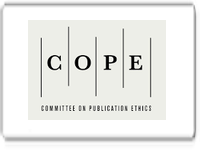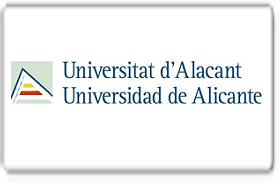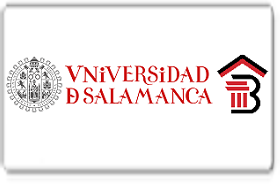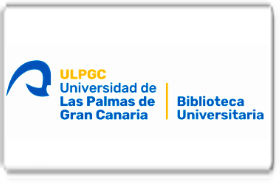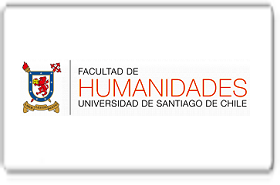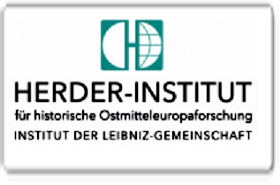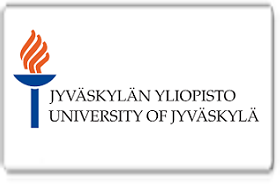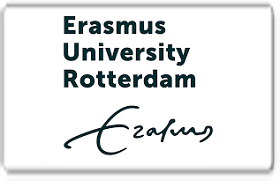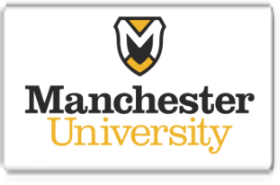Cambios Clínicos y Conductuales Postoperatorios de un Paciente con SRB: Estudio de Caso
DOI:
https://doi.org/10.56048/MQR20225.8.1.2024.3898-3921Palabras clave:
Síndrome; SRB; Cirugía; ConductaResumen
El objetivo de la presente investigación fue evaluar los signos clínicos y las modificaciones conductuales de un paciente canino de raza American Bully, de 2 años de edad, afectado por Síndrome Respiratorio Braquicefálico (SBR), durante el periodo postoperatorio.
Previo a la cirugía programada, se realizó la historia clínica (HC), lo cual nos permitió documentar los cambios postquirúrgicos del paciente. Además se evaluó la respuesta de los sistemas respiratorio, cardiovascular, metabólico, músculo esquelético y neurosensorial al estrés impuesto por el ejercicio mediante la prueba del esfuerzo de los 6 minutos, de igual forma se realizaron evaluaciones de bienestar animal a través de la libertad de sueño y comodidad, alimentación, e interacción con otros perros durante un periodo de 5 días. El procedimiento quirúrgico consistió en dos fases: la primera en la corrección del paladar blando elongado mediante estafilectomía, en tanto que la segunda fase incluyó rinoplastia y corrección de la estenosis de narinas. Adicionalmente, se llevaron a cabo las mismas pruebas para recopilar datos postcirugía.
Tras la finalización de la cirugía, el paciente permaneció en observación tiempo en el cual se presentó un episodio de disnea respiratoria, fenómeno considerado “común” en estos pacientes atribuido a la presentación de edema laríngeo postquirúrgico, posteriormente la saturación permaneció entre 87% a 96% SPO2, con un promedio de 91% SPO2, los sonidos respiratorios disminuyeron notablemente, y el proceso de alimentación, previamente afectado por el SBR, mostró mejoría en el primer día postoperatorio, observado además, un incremento en la calidad de sueño y descanso del paciente.
Descargas
Métricas
Cited
DOI: 10.56048![]()
Citas
Ambrisko, T. D., Schramel, J. P., Auer, U., & Moens, Y. P. S. (2017). Impact of four different recumbencies on the distribution of ventilation in conscious or anaesthetized spontaneously breathing beagle dogs: An electrical impedance tomography study. PLoS ONE, 12(9). Scopus. https://doi.org/10.1371/journal.pone.0183340
Ambros, B., Carrozzo, M. V., & Jones, T. (2018). Desaturation times between dogs preoxygenated via face mask or flow-by technique before induction of anesthesia. Veterinary Anaesthesia and Analgesia, 45(4), 452-458. https://doi.org/10.1016/j.vaa.2018.03.004
Andrews, A. L. M. M., nueva, E. a sitio externo E. enlace se abrirá en una ventana, Youngman, K. L., Packer, R. M. A., nueva, E. a sitio externo E. enlace se abrirá en una ventana, O’Neill, D. G., nueva, E. a sitio externo E. enlace se abrirá en una ventana, & Kafarnik, C. (2023). A Review of Clinical Outcomes, Owner Understanding and Satisfaction following Medial Canthoplasty in Brachycephalic Dogs in a UK Referral Setting (2016–2021). Animals, 13(12). https://doi.org/10.3390/ani13122032
Aromaa, M., Rajamaki, M. M., & Lilja-Maula, L. (2021). A follow-up study of exercise test results and severity of brachycephalic obstructive airway syndrome signs in brachycephalic dogs. Animal Welfare, 30(4), 441-448. https://doi.org/10.7120/09627286.30.4.007
Briand, A., Cochet-Faivre, N., Reyes-Gomez, E., Jaraud-Darnault, A., Tiret, L., & Chevallier, L. (2019). NIPAL4 deletion identified in an American Bully with autosomal recessive congenital ichthyosis and response to topical therapy. Veterinary Medicine and Science, 5(2), 112-117. https://doi.org/10.1002/vms3.149
Brloznik, M., Nemec Svete, A., Erjavec, V., & Petric, A. D. (2023). Echocardiographic analysis of dogs before and after surgical treatment of brachycephalic obstructive airway syndrome. Frontiers in Veterinary Science, 10, 1148288. https://doi.org/10.3389/fvets.2023.1148288
Brložnik, M., Svete, A. N., Erjavec, V., & Petrič, A. D. (2023). Echocardiographic parameters in French Bulldogs, Pugs and Boston Terriers with brachycephalic obstructive airways syndrome. BMC Veterinary Research, 19, 1-13. https://doi.org/10.1186/s12917-023-03600-9
Buhl, K., Kersten, U., & Nolte, I. (2001). Post-anaesthetic long-term electrocardiographic monitoring in dogs. Tierärztliche Praxis Ausgabe Kleintiere Heimtiere, 29(2), 108-112.
Casoni, D., Spadavecchia, C., & Adami, C. (2015). S-ketamine versus racemic ketamine in dogs: Their relative potency as induction agents. Veterinary Anasesthesia and Analgesia, 42(3), 250-259. https://doi.org/10.1111/vaa.12200
Costa, J., nueva, E. a sitio externo E. enlace se abrirá en una ventana, Steinmetz, A., & Delgado, E. (2021). Clinical signs of brachycephalic ocular syndrome in 93 dogs. Irish Veterinary Journal, 74, 1-8. https://doi.org/10.1186/s13620-021-00183-5
Coutinho, F. A., Ramirez, U. R. A., Maronezi, M. C., Letícia, P., Possa, M. M., Montanhim, G. L., Camacho, A. A., Rossi, F. M. A., & Castro, M. P. (2020). Liver and spleen elastography of dogs affected by brachycephalic obstructive airway syndrome and its correlation with clinical biomarkers. Scientific Reports (Nature Publisher Group), 10(1). https://doi.org/10.1038/s41598-020-73209-7
Davis, M. S., Cummings, S. L., & Payton, M. E. (2017). Effect of brachycephaly and body condition score on respiratory thermoregulation of healthy dogs. Journal of the American Veterinary Medical Association, 251(10), 1160-1165. https://doi.org/10.2460/javma.251.10.1160
Della Maggiore, A. (2014). Tracheal and Airway Collapse in Dogs. Veterinary Clinics of North America-Small Animal Practice, 44(1), 117-+. https://doi.org/10.1016/j.cvsm.2013.09.004
Della Maggiore, A. (2020). An Update on Tracheal and Airway Collapse in Dogs. Veterinary Clinics of North America-Small Animal Practice, 50(2), 419-+. https://doi.org/10.1016/j.cvsm.2019.11.003
Dupré, G. P., Farrell, M. (2018). Efficacy of surgical modifications of the upper respiratory tract of brachycephalic airway obstructive syndrome in dogs: a systematic review. Plos One, 13(10).
Dupré, G., & Heidenreich, D. (2016). Brachycephalic Syndrome. Veterinary Clinics: Small Animal Practice, 46(4), 691-707. https://doi.org/10.1016/j.cvsm.2016.02.002
Eberspacher, E., Baumgartner, C., Henke, J., & Erhardt, W. (2005). Invasive blood pressure determination in dogs premedicated with intramuscularly administered acetylpromazine maleate. Tierärztliche Praxis Ausgabe Kleintiere Heimtiere, 33(1), 27-31.
Eivers, C., nueva, E. a sitio externo E. enlace se abrirá en una ventana, Rueda, R. C., Liuti, T., Schmitz, S. S., & nueva, E. a sitio externo E. enlace se abrirá en una ventana. (2019). Retrospective analysis of esophageal imaging features in brachycephalic versus non‐brachycephalic dogs based on videofluoroscopic swallowing studies. Journal of Veterinary Internal Medicine, 33(4), 1740-1746. https://doi.org/10.1111/jvim.15547
Epstein, M., Rodan, I., Griffenhagen, G., Kadrlik, J., Petty, M., Robertson, S., & Simpson, W. (2015). 2015 AAHA/AAFP pain management guidelines for dogs and cats. Journal of the American Animal Hospital Association, 51(2), 67-84. Scopus. https://doi.org/10.5326/JAAHA-MS-7331
Fenner, J. V. H., Quinn, R. J., & Demetriou, J. L. (2020). Postoperative regurgitation in dogs after upper airway surgery to treat brachycephalic obstructive airway syndrome: 258 cases (2013‐2017). Veterinary Surgery, 49(1), 53-60. https://doi.org/10.1111/vsu.13297
Ferro Lopes, P. C., Nunes, N., Sousa, M. G., Nishimori, C. T. D., Carareto, R., dos Santos, P. S. P., & Camacho, A. A. (2013). The effects of different inspired oxygen fractions on gas exchange and Tei-index of myocardial performance in propofol-anesthetized dogs. Veterinary Anaesthesia and Analgesia, 40(6), 573-583. Scopus. https://doi.org/10.1111/vaa.12074
Gallman, J., Lee-Fowler, T., Clark-Price, S., nueva, E. a sitio externo E. enlace se abrirá en una ventana, Grobman, M., & nueva, E. a sitio externo E. enlace se abrirá en una ventana. (2023). Evaluation of infrared thermography and 6-minute walk tests to assess airflow limitation, impaired thermoregulation, and exercise intolerance in dogs with brachycephalic obstructive airway syndrome. PLoS One, 18(3). https://doi.org/10.1371/journal.pone.0283807
Garcia-Sanz, V., Aguado, D., Gomez de Segura, I. A., & Canfran, S. (2021). Individualized positive end-expiratory pressure following alveolar recruitment manoeuvres in lung-healthy anaesthetized dogs: A randomized clinical trial on early postoperative arterial oxygenation. Veterinary Anaesthesia and Analgesia, 48(6), 841-853. https://doi.org/10.1016/j.vaa.2021.03.019
Gough, A., Thomas, A., & O’Neill, D. (2018). Breed Predispositions to Disease in Dogs and Cats. John Wiley & Sons, Ltd. https://doi.org/10.1002/9781119225584
Grubb, T., Sager, J., Gaynor, J. S., Montgomery, E., Parker, J. A., Shafford, H., & Tearney, C. (2020). 2020 AAHA Anesthesia and Monitoring Guidelines for Dogs and Cats*. Journal of the American Animal Hospital Association, 56(2), 59-82. Scopus. https://doi.org/10.5326/JAAHA-MS-7055
Hahn, S.-E., Jo, Y.-K., Jin, Y.-K., & Jang, G. (2017). Timing of fertile period for successful pregnancy in American Bully dogs. Theriogenology, 104, 49-54. https://doi.org/10.1016/j.theriogenology.2017.07.034
Haimel, G., & Dupré, G. (2015). Brachycephalic airway syndrome: A comparative study between pugs and French bulldogs. Journal of Small Animal Practice, 56(12), 714-719. https://doi.org/10.1111/jsap.12408
Jones, B. A., Stanley, B. J., & Nelson, N. C. (2020). The impact of tongue dimension on air volume in brachycephalic dogs. Veterinary Surgery, 49(3), 512-520. https://doi.org/10.1111/vsu.13302
Karla, M. F. (s. f.). Estúdio social – cultural del bienestar animal en perros domésticos de zonas urbanas y zonas rurales en el estado de Tabasco—Socio—Cultural study of animal welfare in dogs.
Kenny, D. D., nueva, E. a sitio externo E. enlace se abrirá en una ventana, Freemantle, R., Jeffery, A., Tivers, M. S., & nueva, E. a sitio externo E. enlace se abrirá en una ventana. (2022). Impact of an educational intervention on public perception of brachycephalic obstructive airway syndrome in brachycephalic dogs. The Veterinary Record, 190(11). https://doi.org/10.1002/vetr.1430
Krainer, D., & Dupré, G. (2022). Brachycephalic Obstructive Airway Syndrome. Veterinary Clinics: Small Animal Practice, 52(3), 749-780. https://doi.org/10.1016/j.cvsm.2022.01.013
Ladlow, J., Liu, N.-C., Kalmar, L., & Sargan, D. (2018). Brachycephalic obstructive airway syndrome. The Veterinary Record, 182(13). https://doi.org/10.1136/vr.k1403
Lindsay, B., Cook, D., Wetzel, J.-M., Siess, S., & Moses, P. (2020). Brachycephalic airway syndrome: Management of post-operative respiratory complications in 248 dogs. Australian Veterinary Journal, 98(5), 173-180. https://doi.org/10.1111/avj.12926
Liu, N., Adams, V. J., Kalmar, L., Ladlow, J. F., & Sargan, D. R. (2016). Whole‐Body Barometric Plethysmography Characterizes Upper Airway Obstruction in 3 Brachycephalic Breeds of Dogs. Journal of Veterinary Internal Medicine, 30(3), 853-865. https://doi.org/10.1111/jvim.13933
Liu, N.-C., Sargan, D. R., Adams, V. J., & Ladlow, J. F. (2015). Characterisation of Brachycephalic Obstructive Airway Syndrome in French Bulldogs Using Whole-Body Barometric Plethysmography. Plos One, 10(6), e0130741. https://doi.org/10.1371/journal.pone.0130741
Martin-Flores, M., Cannarozzo, C. J., Tseng, C. T., Lorenzutti, A. M., Araos, J. D., Harvey, H. J., Gleed, R. D., & Campoy, L. (2020). Postoperative oxygenation in healthy dogs following mechanical ventilation with fractions of inspired oxygen of 0.4 or >0.9. Veterinary Anaesthesia and Analgesia, 47(3), 295-300. Scopus. https://doi.org/10.1016/j.vaa.2020.01.002
Matz, B. M., Henderson, R. A., Lindley, S. S., & Smith, A. N. (2021). Total laryngectomy and permanent tracheostomy in six dogs. Veterinary and Comparative Oncology, 19(4), 678-684. https://doi.org/10.1111/vco.12681
Meola, S. D. (2013). Brachycephalic Airway Syndrome. Topics in Companion Animal Medicine, 28(3), 91-96. https://doi.org/10.1053/j.tcam.2013.06.004
Mitze, S., Barrs, V. R., Beatty, J. A., Hobi, S., nueva, E. a sitio externo E. enlace se abrirá en una ventana, & Bęczkowski, P. M. (2022). Brachycephalic obstructive airway syndrome: Much more than a surgical problem. The Veterinary Quarterly, 42(1), 213-223. https://doi.org/10.1080/01652176.2022.2145621
Njoku, N. U. (2015). Effects of maintenance of propofol-ketamine anesthesia with repeat bolus and constant rate infusion of propofol on physiological, biochemical, anesthetic and analgesic indices in dogs. Journal of Advanced Veterinary and Animal Research, 2(4), 427-434. https://doi.org/10.5455/javar.2015.b114
Notari, L., Burman, O., & Mills, D. (2015). Behavioural changes in dogs treated with corticosteroids. Physiology & Behavior 151, 609-616. https://doi.org/10.1016/j.physbeh.2015.08.041
Orozco, S. C. (2003). Manejo médico y quirúrgico del síndrome de las vías aéreas superiores del braquicéfalo. Reporte de un caso. 16.
Packer, R. M. A., Hendricks, A., Tivers, M. S., & Burn, C. C. (2015). Impact of Facial Conformation on Canine Health: Brachycephalic Obstructive Airway Syndrome. PLOS ONE, 10(10), e0137496. https://doi.org/10.1371/journal.pone.0137496
Packer, R. M. A., O’Neill, D. G., Fletcher, F., & Farnworth, M. J. (2019). Great expectations, inconvenient truths, and the paradoxes of the dog-owner relationship for owners of brachycephalic dogs. PLOS ONE, 14(7), e0219918. https://doi.org/10.1371/journal.pone.0219918
Papageorgiou, V., Chatzimisios, K., Angelou, V., Kazakos, G., & Papazoglou, L. G. (2020). Traumatic tracheostomy in a dog. Veterinary Record Case Reports, 8(3), e001211. https://doi.org/10.1136/vetreccr-2020-001211
Petruccione, I., Murison, P. J., Flaherty, D., & Auckburally, A. (2021). Comparison between dexmedetomidine and acepromazine in combination with methadone for premedication in brachycephalic dogs undergoing surgery for brachycephalic obstructive airway syndrome. Veterinary Anaesthesia and Analgesia, 48(3), 305-313. https://doi.org/10.1016/j.vaa.2020.09.008
Pohl, S., Roedler, F. S., & Oechtering, G. U. (2016). How does multilevel upper airway surgery influence the lives of dogs with severe brachycephaly? Results of a structured pre- and postoperative owner questionnaire. The Veterinary Journal, 210, 39-45. https://doi.org/10.1016/j.tvjl.2016.01.017
Racette, M. A., Sharkey, L. C., Rendahl, A. K., Heinrich, D. A., & Chow, R. S. (2022). Retrospective evaluation of fluid production at the time of thoracostomy tube removal following elective and emergency surgery in dogs (2010-2017): 185 cases. Journal of Veterinary Emergency and Critical Care, 32(1), 58-67. https://doi.org/10.1111/vec.13138
Sako, T., Mori, A., Lee, P., Igarashi, A., Oda, H., Saeki, K., Miki, Y., Kurishima, M., Mimura, K., Nozawa, S., Itabashi, Y., Kiyosawa, Y., Ishioka, K., & Arai, T. (2011). Age-specific plasma biochemistry reference ranges in <1 year old dogs in Japan. Veterinary Research Communications, 35(4), 201-209. https://doi.org/10.1007/s11259-011-9463-0
Sánchez Riquelme, A., Fierro Herrera, C., Troya González, F., & Pfeffer Pfeffer, M. (2019). Caracterización de salud reproductiva en perros. Revista de Investigaciones Veterinarias del Perú, 30(3), 1249-1256. https://doi.org/10.15381/rivep.v30i3.16723
Santos, F., Grapiglia, A. de L., Rodrigues, C. L., Palhari, C. da C., Lopes, D. M., Jojima, F. S., Noronha, L. F. de, Carneiro, L. F. L., Silva, M. M., & Cunha, O. da. (2022). Desordens hiperostóticas em American Bully. Revista Brasileira de Ciência Veterinária, 29(4), Article 4. https://periodicos.uff.br/rbcv/article/view/55686
Seneviratne, M., nueva, E. a sitio externo E. enlace se abrirá en una ventana, Kaye, B. M., & Haar, G. T. (2020). Prognostic indicators of short-term outcome in dogs undergoing surgery for brachycephalic obstructive airway syndrome. The Veterinary Record, 187(10), 403-403. https://doi.org/10.1136/vr.105624
Solano, K., Rivadeneira, H., & Bernardi, C. (2015). Evaluación del grado de bienestar animal de los perros en Cuenca. Maskana, 6, 225-226.
Stordalen, M. B., nueva, E. a sitio externo E. enlace se abrirá en una ventana, Silveira, F., nueva, E. a sitio externo E. enlace se abrirá en una ventana, Fenner, J. V. H., & Demetriou, J. L. (2020). Outcome of temporary tracheostomy tube‐placement following surgery for brachycephalic obstructive airway syndrome in 42 dogs. The Journal of Small Animal Practice, 61(5), 292-299. https://doi.org/10.1111/jsap.13127
Swisher, S., Lennox, A., & Blair, L. (2018). Successful Removal of a Tracheal Foreign Body Secondary to Nasogastric Tube Placement in a Rabbit (oryctolaglis Cliniclilus). Journal of Exotic Pet Medicine, 27(1), 32-35. https://doi.org/10.1053/j.jepm.2017.10.018
Tagliabue, G., Ji, M., Suneby Jagers, J. V., Zuege, D. J., Kieser, T. M., & Easton, P. A. (2022). Expiratory and inspiratory action of transversus abdominis during eupnea and hypercapnic ventilation. Respiratory Physiology and Neurobiology, 306. Scopus. https://doi.org/10.1016/j.resp.2022.103951
Tarricone, J., Hayes, G. M., Singh, A., & Davis, G. (2019). Development and validation of a brachycephalic risk (BRisk) score to predict the risk of complications in dogs presenting for surgical treatment of brachycephalic obstructive airway syndrome. Veterinary Surgery, 48(7), 1253-1261. https://doi.org/10.1111/vsu.13291
Tokunaga, S., Ehrhart, E. J., & Monnet, E. (2020). Histological and mechanical comparisons of arytenoid cartilage between 4 brachycephalic and 8 non-brachycephalic dogs: A pilot study. PLoS One, 15(9). https://doi.org/10.1371/journal.pone.0239223
Tomsic, K., & Nemec Svete, A. (2022). A mini-review of the effects of inhalational and intravenous anesthetics on oxidative stress in dogs. Frontiers in Veterinary Science, 9, 987536. https://doi.org/10.3389/fvets.2022.987536
Vargas, P., Rincón, J., Ruiz, S., Tapasco, L., Pedraza, A., Vargas, P. (2019). Prueba de marcha de seis minutos en perros habitantes de gran altura. Rev Inv Vet Perú, 30(01):49-53.
Viilmann, I., & Vettorato, E. (2022). Propofol-dexmedetomidine continuous infusion in a dog with pulmonic stenosis undergoing balloon valvuloplasty. Veterinary Record Case Reports, 10(2), e291. https://doi.org/10.1002/vrc2.291
Publicado
Cómo citar
Número
Sección
Categorías
Licencia

Esta obra está bajo una licencia internacional Creative Commons Atribución 4.0.
Los autores se comprometen a respetar la información académica de otros autores, y a ceder los derechos de autor a la Revista MQRInvestigar, para que el artículo pueda ser editado, publicado y distribuido. El contenido de los artículos científicos y de las publicaciones que aparecen en la revista es responsabilidad exclusiva de sus autores. La distribución de los artículos publicados se realiza bajo una licencia 


















